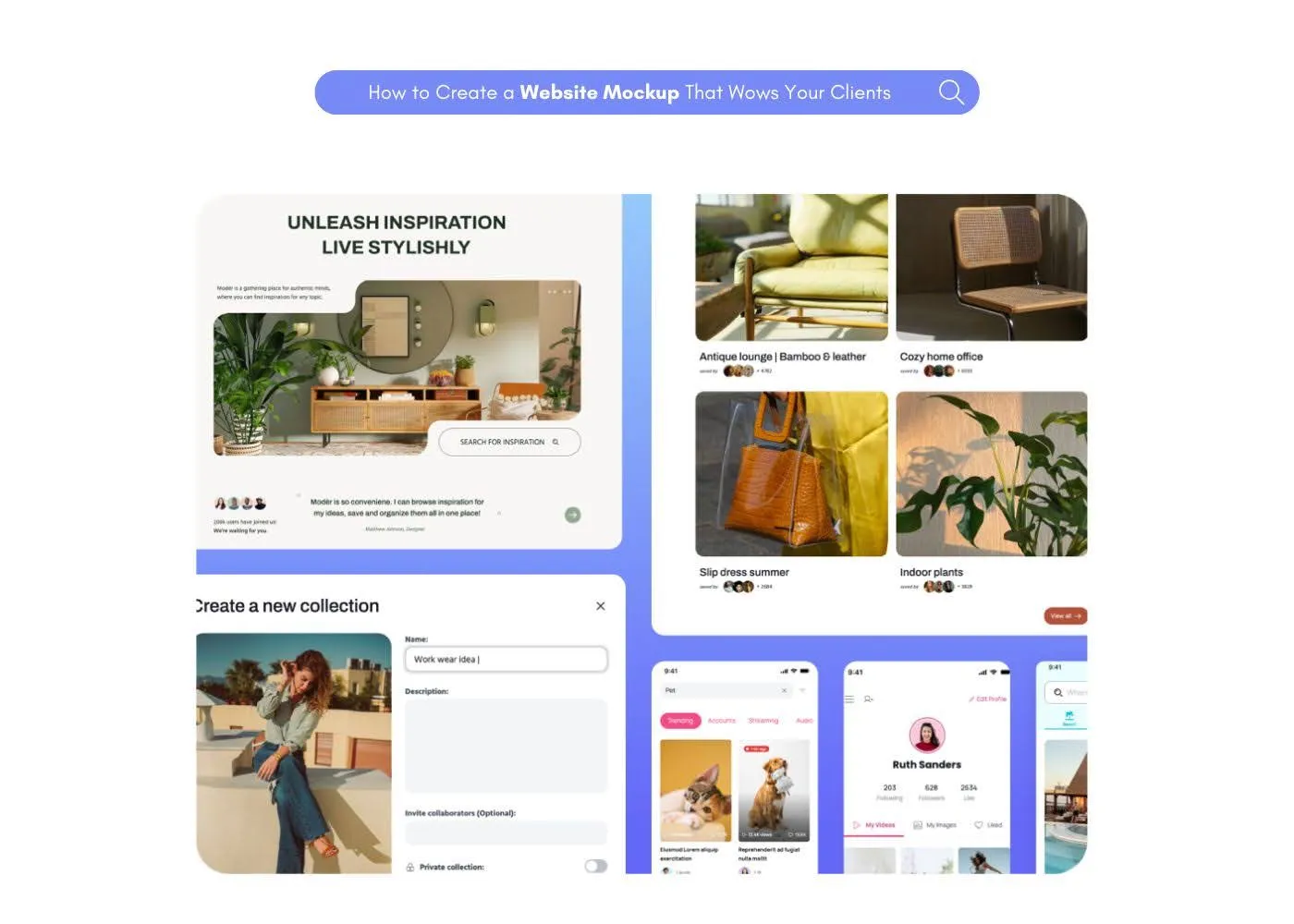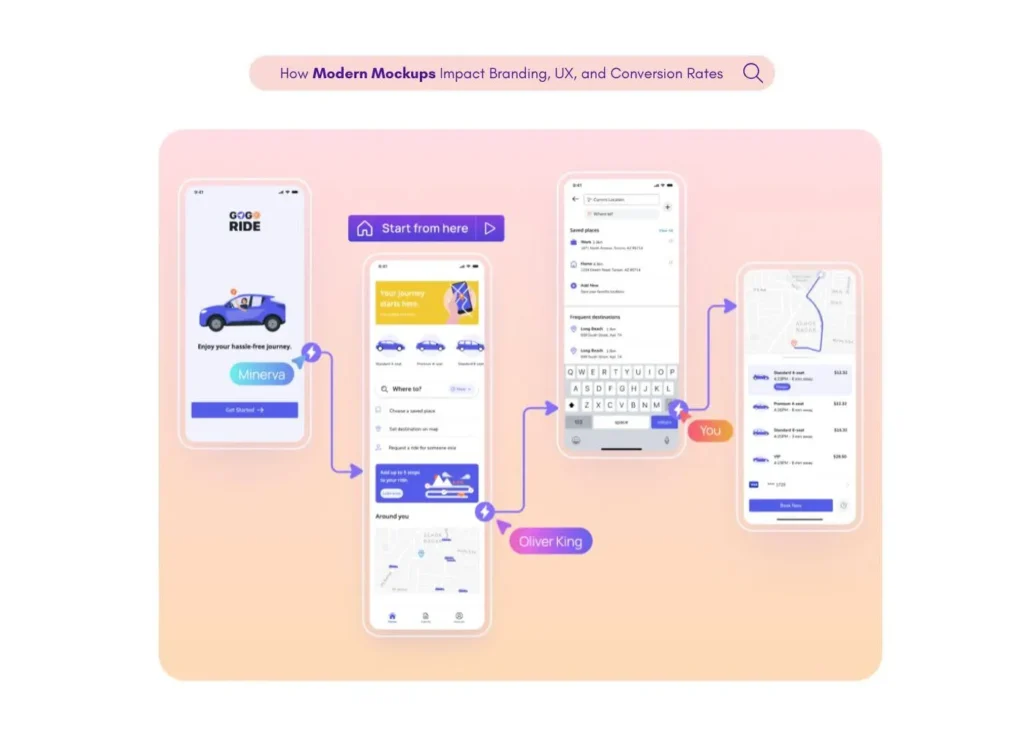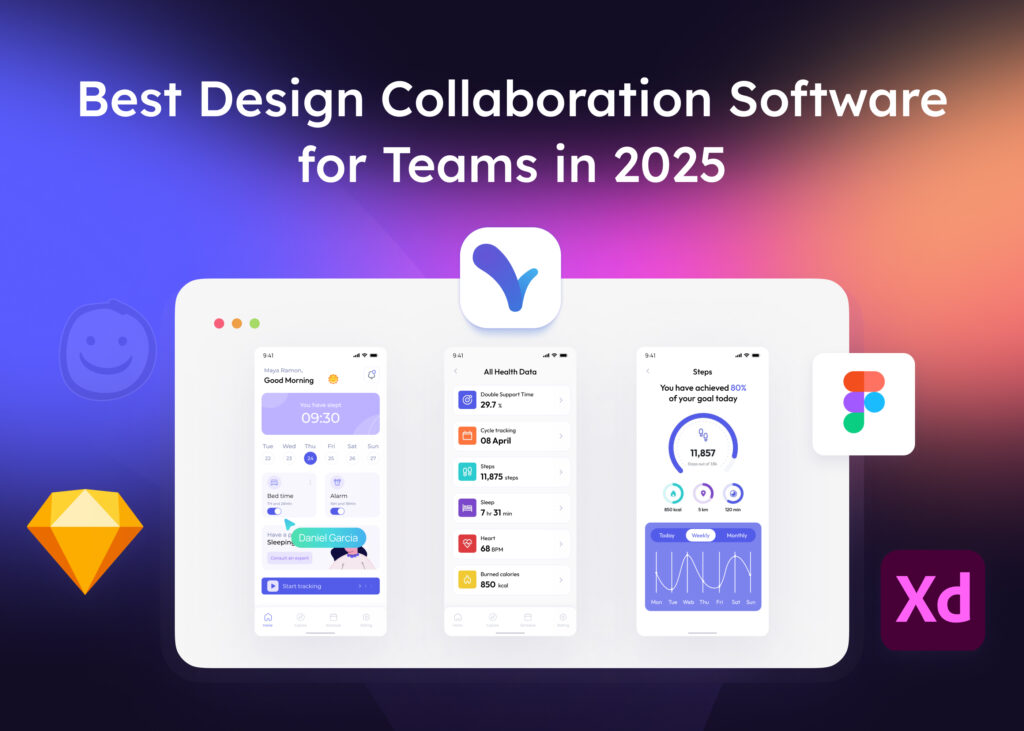Want to impress your clients before a single line of code is written?
Learning how to create a website mockup is your secret weapon. A well-designed mockup not only brings your ideas to life but also builds trust and speeds up feedback.
In this guide, we’ll show you how to make a mockup of a website that looks professional, aligns with your client’s vision, and sets the stage for a smooth development process. Whether you’re wondering how to create a mockup website for a client or exploring tools to design mockups for websites, we’ve got you covered.
How Mockups Help Bridge the Gap Between Vision and Execution
Client meetings can quickly become frustrating when ideas remain abstract. Many web designers struggle to translate client expectations into tangible designs, resulting in multiple revisions, wasted time, and ultimately, unhappy clients. Knowing how to create a website mockup effectively solves this fundamental communication problem.
Website mockups serve as visual bridges between conceptual ideas and final implementation. Rather than getting stuck in endless email chains describing layout changes, a well-crafted mockup provides a clear reference point for discussion.
Professional designers understand that learning how to make a mockup website is essential for setting proper expectations and reducing costly revisions later in the development process.
Throughout this article, we’ll cover proven techniques for creating mockups that not only look impressive but also serve as practical blueprints for development. From gathering client requirements to avoiding common pitfalls, you’ll gain actionable insights to elevate your design process.
Understanding Client Needs: The Foundation Of A Great Website Mockup
What To Ask Before Designing?
Rushing into design without proper research creates a shaky foundation. Before opening any design software, gathering comprehensive client information proves critical for success.
Client questionnaires help extract essential information while demonstrating professionalism.
When figuring out how to make a mockup of a website, start by asking these key questions:
- Identify 2-3 competitor websites the client admires and what specifically appeals to them about each design
- Ask for specific functionality requirements beyond standard features (forms, galleries, e-commerce)
- Request brand assets including logo files, color codes, and existing style guides
- Clarify the primary audience demographics and pain points the website should address
- Determine key performance indicators for measuring website success
Documenting client answers creates a reference point for later discussions and helps justify design decisions when presenting the mockup.
Aligning Mockup Structure with Business Goals and Branding
Effective mockups balance aesthetics with strategic business objectives. Understanding how to create a mockup website for a client means aligning visual elements with measurable goals.
- Start by mapping customer journeys through the site:
- What paths should visitors take?
- Where are the primary conversion points?
- Which content deserves prominence?
- Visual hierarchy principles guide visitors’ attention through the strategic use of:
- Contrast variations between primary and secondary elements
- Proportional size differences between headline and body text
- Strategic whitespace that frames important content
- Color psychology aligned with brand values and desired actions
For example, a law firm website mockup might use formal typography, subdued colors, and prominent credential displays to convey trustworthiness, while an e-commerce site would emphasize product imagery and clear call-to-action buttons.
Visily has 100+ premade design templates that can be utilized as it has already built mockups for different use cases from Saas website, CRMs, and many more.
Client brand guidelines provide the visual foundation, but skilled designers know when to respectfully suggest improvements while maintaining brand consistency.
How To Create A Website Mockup That Impresses Clients
Step 1: Choosing the Right Tool
Selecting appropriate software significantly impacts your mockup process efficiency. While experienced designers often use advanced tools like Adobe XD or Figma, AI-powered tools like Visily have revolutionized the process for designers of all skill levels.
Visily Website Mockup Generator stands out with its AI-powered features that dramatically speed up the mockup process. The platform allows you to generate designs through text prompts, transform screenshots into editable designs, or convert sketches into professional mockups.
Step 2: Designing a Wireframe vs. a High-Fidelity Mockup
Understanding when to use different fidelity levels helps optimize your workflow. Designers familiar with how to design a website mockup typically progress through multiple stages of refinement.
Start with low-fidelity wireframes to:
- Quickly establish a basic layout structure before committing to details
- Get early client feedback on content organization and flow
- Test multiple layout options without time-intensive styling
Once the basic structure receives approval, develop high-fidelity mockups that include:
- Actual content rather than placeholder text where possible
- Proper typography according to brand guidelines
- Color schemes and imagery reflecting the final vision
- Interactive elements that mimic the intended functionality
For efficiency, Visily’s Screenshot to Design feature allows you to transform existing designs into editable mockups. This proves especially useful when redesigning websites or drawing inspiration from competitor layouts.
Step 3: Adding Interactivity to Make the Mockup Feel Real
Static images rarely capture the full user experience. Understanding how to design mockups for websites includes adding interactive elements that simulate actual usage.
Modern mockup tools support various interactive features:
- Clickable navigation that moves between different page mockups
- Hover states showing button color changes and animations
- Modal windows demonstrating form submissions or popup content
- Scroll behaviors revealing how content appears during navigation
Adding these interactive elements transforms passive presentations into engaging demonstrations. Clients can experience the website rather than simply viewing it, creating stronger buy-in before development begins.
When presenting interactive mockups, provide guided walkthroughs highlighting key features and interactions. Recording short demonstration videos serves as helpful reference material for clients who want to revisit the mockup after presentations.
How To Make Sure Your Mockup Is Technically Feasible
Ensuring Responsiveness and Cross-Platform Adaptability
Beautiful mockups mean little if they can’t be implemented properly. Learning how to build a mockup website requires understanding technical constraints and platform dependencies.
Designers should consider these technical aspects:
- Design for multiple screen sizes simultaneously using responsive principles
- Check font availability across platforms before including specialty typefaces
- Verify that planned animations and transitions are achievable with standard technologies
- Consider page load implications when incorporating heavy media elements
Collaboration with developers early in the mockup process prevents unrealistic designs. Most experienced designers maintain open communication with development teams while creating mockups.
Read About UI Design and UI Development: A Comprehensive Comparison
Unlike other tools, Visily AI Website Mockup Generator makes it easier to design for both mobile and desktop without starting from scratch. You get ready-made templates for each device, so if you’re building a mobile app, just pick a mobile template and get started fast.
Common Mistakes To Avoid When Creating Website Mockups
Mistake #1 – Creating pixel-perfect designs without client input
Many designers spend hours perfecting mockups before showing anything to clients, only to find they’ve headed in the wrong direction entirely.
How to fix it:
- Share low-fidelity wireframes early to validate the general direction
- Schedule incremental review sessions throughout the design process
- Create multiple concept options for initial presentations to gauge preferences
Mistake #2 – Focusing on aesthetics over functionality
Beautiful mockups that ignore business objectives or user needs ultimately fail, regardless of visual appeal.
How to fix it:
- Map user journeys before designing interface elements
- Align each section with specific conversion goals or user needs
- Test navigation patterns with actual users before finalizing
Mistake #3 – Ignoring real-world content constraints
Mockups often look perfect with idealized placeholder content but break when the actual content is implemented.
How to fix it:
- Request actual content from clients before finalizing designs
- Plan for content variations (longer headlines, varying image ratios)
- Build flexibility into layouts to accommodate growth over time
Mistake #4 – Making unrealistic promises in mockup presentations
Clients become frustrated when the final website differs significantly from approved mockups.
How to fix it:
- Verify technical feasibility with developers before presenting mockups
- Clearly communicate which elements may differ in the final implementation
- Document specific interactions that require special development attention
Mastering how to create mockup website design means balancing client expectations with technical reality while maintaining focus on business objectives.
Elevate Your Client Work With Smart Mockup Design
Creating effective website mockups requires balancing artistry with strategy. Professional mockups don’t just look good they solve problems, guide development, and align with measurable business goals.
Key takeaways from this guide:
→ Start with thorough client research before designing anything
→ Choose the right tools based on project complexity and your skill level
→ Progress through wireframes to high-fidelity mockups methodically
→ Add interactive elements to create immersive client presentations
→ Validate technical feasibility throughout the design process
→ Avoid common pitfalls by maintaining client communication
Ready to transform your mockup process? Consider exploring AI-powered tools like Visily’s Website Mockup Generator to streamline your workflow and create more impressive client presentations with less effort.
Knowing how to make a mockup website effectively elevates your professional reputation, wins client approval faster, and ultimately leads to more successful web projects.
FAQ
What’s the difference between a wireframe, mockup, and prototype?
A wireframe is a low-fidelity sketch showing basic structure and layout. A mockup is a static, high-fidelity visual design showing colors, typography, and imagery. A prototype is an interactive simulation that demonstrates functionality and user flows. Learn more about the difference between wireframe, mockup and prototype.
What tools can I use to create website mockups?
Popular tools include Visily, Figma, Adobe XD, and Sketch. AI-powered tools like Visily’s Website Mockup Generator can help create mockups quickly from text prompts or screenshots.
How detailed should a website mockup be?
A mockup should include accurate colors, typography, imagery, and layout, but doesn’t need to show every possible state or interaction. Focus on creating a visual representation that communicates the design direction clearly.
How long does it take to create a website mockup?
Timeframes vary based on complexity but typically range from a few days for simple websites to several weeks for complex projects. Using templates or AI-powered tools can significantly reduce this time.













